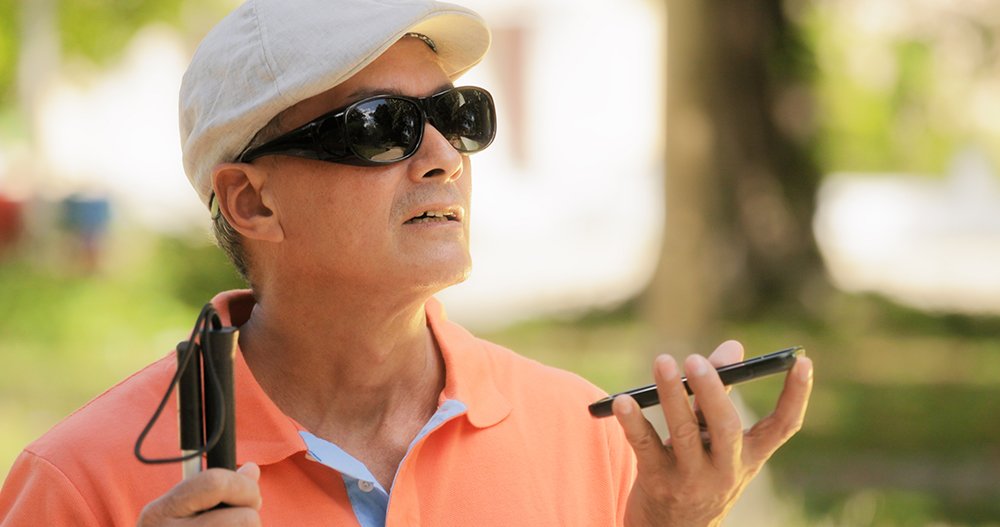Cognitive Ramping with Plain Language
[Approximate Reading Time : 4 mins]When it comes to digital accessibility, the most ignored but also the easiest sector to fix is cognitive accessibility. We see many sites having options for people with visual, auditory, and physical disabilities, like screen readers, captions, and easy keyboard navigation. How do sites help out people with intellectual, developmental, and learning disabilities?
There is a simple answer, which is a major improvement but not a complete success: Plain Language. The Plain Language Act, passed in 2010, intended to make government communications understandable to laymen. Easy-to-read language, a.k.a. plain language, is a term that now means more accessibility.
Many barriers to cognitive accessibility are the same as usability problems for general audience but . . . more severe.
—Clayton Lewis
Accessibility to information is a civil right. Plain Language is a part of Web Content Accessibility Guidelines 2.0 (WCAG 2.0), and a site’s conformance to it is basic though not legally required.
Very few websites offer a plain language version alongside the original piece. Plain language is editing out the complexity of the content and not the complex content itself. It is about liquidating the ideas and explaining the subject from the basics. Plain language is often lengthy and adds more information than that in the original document. It may seem to violate civility, but a carefully translated content will offer more clarity and insight. There are no definite standards to abide by but only a few guidelines to follow.
Cognitive curbs
People with disabilities may have problems in one or more areas. It is not easy to design sites that offer solutions to all of these problems, but Plain Language aids everyone. It helps to overcome cognitive curbs in memory, executive functions, reasoning, attention, language, understanding figurative language, literacy, motor or psychomotor perceptions, and knowledge or behavioral difficulties to some extent.
Guidelines
A simple guide to understand and create Plain Language content, by Sara Luterman, author of the Plain Language version of “Disability Visibility,” and Zoe Gross, of the Autistic Self Advocacy Network, stresses on the following:
- Commonly used words with fewer syllables.
- Short sentences with one idea per sentence. Use lists.
- Short paragraphs that focus on a single topic. One subject per page/screen.
- Clear headings and subheadings.
- Active voice.
- Avoid pronouns, similes, personification, oxymorons, and puns.
- Cut back extra details or personal impressions, if possible.
- Use pictures and tables.
- Simple fonts with more space between lines and paragraphs.
- Grade-level scoring tools to measure the content’s readability. Plain language is 4th- to 5th-grade readability, while Easy Read is 2nd- to 3rd-grade readability.
Text that uses short simple sentences is easier to decode word by word and consumes lesser mental energy, as it requires lesser advanced reading ability.
Digital tools are available to evaluate Plain Language documents. Up Goer Five is a tool that marks words that are not commonly used. Grammarly Readability Scores provides grade-level scores. Readability Formulas is a collection of resources and text evaluation tools.
Invest for the future
The internet has become more essential in recent times. It is how people work, stay updated on current news and health information, and remain connected with friends and family. When organizations don’t bring progressive changes to their user interfaces, which they are well capable of doing, people with disabilities lose their independence. This loss, followed by the increase in cost of care, diminishes their quality of life and personal sense of dignity. It is projected that there will be 115 million people with dementia by 2050. If applications are impossible to use for people with mild cognitive decline in the present, firms will lose large chunks of clients with time.
Plain Language benefits all users, including people with low reading literacy and people encountering an unknown subject or language. It can be implemented without unintended side-effects on people who prefer conventional language.
People need to be able to find, understand, and utilize websites. Equal service is the ultimate aim of accessibility, and every step toward it matters. Providing help to combat language complexity is the beginning of cognitive ramping. Know more about Amnet Accessibility Services, and upgrade your content to include all.
Sources:- https://www.w3.org/TR/coga-user-research/#:~:text=Abstract,memory%2C%20perception%2C%20and%20reasoning.
- https://www-forbes-com.cdn.ampproject.org/c/s/www.forbes.com/sites/andrewpulrang/2020/10/22/plain-language-writing—an-essential-part-of-accessibility/amp/.
- https://rosenfeldmedia.com/a-web-for-everyone/plain-language-accessibility-for-information/.


